Journal of Civil Engineering and Environmental Sciences
A Perceptive Journey through Postmodernism
Utpal Kumar Nandy1, Shravani Nandy2 and Antara Nandy3*
2Director, B U Builders & Consultants Pvt. Ltd, NILANJAN, D1/114, Sector-IV, Vinay Nagar, Gwalior (M.P) 474012, India
3Graduate Student, Department of Interior Architecture & Design, Academy of Art University, San Francisco, USA
Cite this as
Nandy UK, Nandy S, Nandy A (2018) A Perceptive Journey through Postmodernism. J Civil Eng Environ Sci 4(1): 020-023. DOI: 10.17352/2455-488X.000022“We live in a time of great uncertainty-caught in the transition from a bold and passionate optimism about the future to a deep skepticism and spirit of nihilism about finding any universal ways for mankind. We live in a ‘Postmodern’ time”. This paper contains a descriptive note of the various phases, facets, ideas & ideologies behind the postmodern movement in art and architecture. It deals with the origin and evolution of the postmodernism. A contrast between its predecessor, modernism and postmodernism has been drawn to understand the underlying reasons triggering the change. The major characteristics defining postmodernism has been provided together with a brief mention of the major contemporary artists and their artworks.
Introduction
It was in the year 1979 with Jean-François Lyotard’s publication, La Condition Postmoderne (The Postmodern Condition: A Report on Knowledge) that the term “postmodern” made it way to the philosophical lexicon. Lyotard makes use of the Wittegenstei Model of language games to illustrate the exchanges between of the philosopher and the expert, and it is this combination of philosophy with the methods and concepts from other disciplines that ‘is characteristic of Postmodernism in its broadest sense.’ Postmodernism, according to Lyotard, can be considered “as incredulity toward meta-narratives” (Lyotard, 1984). Lyotard, in his text, discusses several key elements like digital technology, science, ‘dissolution of epistemic coherence’, ‘compartmentalization of knowledge’, ‘loss of narrative coherence,’s justice, aesthetic judgment and so on [1].
“Postmodernism has been presented as a period, a new aesthetics, a theory, a philosophy, a new epistemology (by Lyotard), a “structure of feeling” (borrowing Raymond Williams’s expression), a “regime of signification” (by Lash), a dominant in the cultural logic of late capitalism (by Jameson), or its fragmented consciousness (by Harvey)” [2]. Postmodernists have a unique and distinct way of perceiving the world as a whole, “and use a set of philosophical ideas that not only support an aesthetic but also analyze a ‘late Capitalist’ cultural condition of ‘postmodernity’” [3].Postmodernist movement is an immediate successor of Modernism and there are also incidents where both can be found to co-exist.
The paper is written with the aim to comprehend Postmodernism and identify its various interpretations. Also, the paper shall briefly delve into its philosophical and ideological aspects.
Modernism and postmodernism
“What is found at the historical beginnings of things is not the inviolable identity of their origin; it is the dissension of other things. It is disparity” [4].
As a consequence of the prominent events and upheavals in the West such as the Great War (1914-18) followed by The Influence Pandemic (1918-19) and later the Wall Street Crash and The Great Depression that occurred in the late 1920s and 1930s as well as the Industrial Revolution, a belief in scientific principles of reason and rational thought got firmly established. Issac Newton, Immanuel Kant and Rene Descartes with their belief in ‘reason as foundation of universal truth’ contributed significantly in shaping the modernist age.
Modernism identified the authority of man, as one who is capable of knowing, rationally perceiving and creating a new ‘liberated’ social and intellectual framework. “Modernism held the extravagant expectation that the arts and sciences would further not only the control of the forces of nature but also the understanding of self and the world, moral progress, justice in social institutions and even human happiness” (Habermas, Jurgen). he ‘avant-garde’ or the key artists of Modernism were aimed at developing newer representation styles in order to express the modern life and in the process art became a means to depict the “inner world of emotions, moods and sensibility”.Prominent modern artworks and artists include The Third of May 1808 (Francisco Goya), Henry Matisse, Coatlicue (Diego Riverra), Guernica, 1937 (Pablo Picasso), Vision of St. John of the Cross (Salvador Dali), Assault (Kathe Kollwitz) and many others.
It is significant to realize that, “In contrast to the purity, unity and order of Modernism, postmodern design seeks to express the exact opposite: messy vitality, hybridity, ambiguity and inconsistency” [5].
Lyotard address the roles of Modernism and Postmodernism by stating that, “Where modern art presents the unpresentable as a missing content within a beautiful form, as in Marcel Proust, postmodern art, puts forward the unpresentable by forgoing beautiful form itself, thus denying what Kant would call the consensus of taste” [1] (Figures 1, 2) [5,6].
“Postmodernism is not a movement, it’s a general attitude” [7]. Leading strategists of Postmodernism include Jean-Francois Lyotard, Michael Foucault, Jacques Derrida, Gilles Deleuze and Richard Rorty.
Some significant characteristics of postmodernism, notable movements and arti
Although Postmodernism is indefinable due to its multifarious personality, it still can be described as a set of strategic, critical and rhetorical practices observing certain concepts like hyper-reality, difference, deconstruction, repetition, the simulacrum and so on Postmodernists de-center man and claim that the “self is merely an effect of language, social relations, and the unconscious” [8]. The postmodern artist, Cindy Sherman’s photographs such as the ‘Untitled Film Stills (1977-1980)’ where pictures herself in numerous disguises, undermine the idea of individuality and portray “the cultural construction of femininity” [9].
“Structuralism and Poststructuralism are two competing intellectual movements formative of postmodern thought” [8]. The structuralists, like modernists, attempted to attain coherence and objectivity based upon scientific theories to unravel unconscious codes of rules governing phenomena and to bring the previously invisible systems to the surface. “Post structuralists, most influentially Jacques Derrida, criticize structuralists for their scientific retentions, their search for universal truth, and their belief in an unchanging human nature” [8]. Postmodernists believed that society, culture and language are arbitrary and they accepted the limitations of people’s disparate views, fragmentation and indeterminacy. For instance, the postmodern painter David Salle juxtaposes diverse subjects on a single canvas to challenge the systems with closed meanings.
Genealogy deals with the study of “accidents and contingencies that converge at crucial moments, giving rise to new epochs, concepts, and institutions”. This method of genealogy has been applied by Nietzsche to address modern subjectivity. Later, Michael Foucault deploys genealogy to “create a ‘counter-memory’ or ‘a transformation of history into a totally different form of time’ [4]. This finds reference to the identity dissolution for the subject in history and use of modern historical research.
Another characteristic of Postmodernism is the concept of Productive Difference i.e. “difference as a productive mechanism, rather than a negation of identity” [1]. This concept finds extensive use by Gilles Deleuze in his works including Nietzsche and Philosophy, wherein he proposes to “think against reason in resistance to Kant’s assertion of the self-justifying authority of reason alone” [10].
Hyperreality is idea that lies in close relation to the concept of the simulacrum. “Baudrillard presents hyperreality as the terminal stage of simulation, where a sign or image has no relation to any reality whatsoever, but is “its own pure simulacrum”” [1].
Numerous artists, architects and philosophers have contributed to the flux of Postmodernism. Postmodernism is complex and multi-layered and has given rise to several art movements by now.
The Minimalism Movement began in the latter half of 20th century. Initially, the minimalist artists attempted to disengage the “process of literal or narrative interpretation and meaning (the Modern ones), while others (postmodern minimalists) recognized their historically-affected consciousness, and acknowledge the historical stream that shaped them” [11]. Hans-Georg Gadamer, postmodern philosopher, held the opinion that both the artist and the beholder possess a certain pre-existing historical and traditional mental plane which he termed as the ‘horizon.’ The postmodern artists sought to achieve a ‘fusion of horizons’ and they focused on the ‘universal’ definition. They made use of “symbols, totems, shapes or traditional techniques” [11] (Figure 3).
For example, the musical sculptures and the „Golden Sun of Harry Bertoia, Men-an-Tol Megalith by Madron and ‘Night’ and ‘Large Horse’ by Willian Turnbull all are representative of postmodern minimalist artworks due to their metaphorical, contextual and totemic qualities respectively.
Pop Art is another art style that developed during this time. Pop culture is a consequence of the “growing mass culture of movies, advertising, science fiction, consumerism, media and communications, product design and new technologies originating in America, but now spreading throughout the west” [12]. Examples of pop art includes, ‘Mr. and Mrs. Cark’ by David Hockney and Roy Lichtenstein’s artworks, ‘Temple of Apollo’ (1964). The postmodern artist Andy Warhol has employed a series of silkscreen prints of the in his artwork, Marilyn Diptych (1962) (Figure 4).
Robert Venturi [13], Philip Johnson, Charles Moore, Michael Graves and Andreas Huyssen are some of the notable postmodern architects, designers and architectural critics.
Postmodernist revelations in the spheres of architecture & interior designing
Many designers during the 1980s were perturbed by the western society’s alienation from its historical roots and made attempts to return to the traditional architectural forms. These postmodern designers “infused motifs from classical Roman architecture into their work” [11]. The 911 Finesta Chair designed by Michael Graves serves as a good example. It resembles in form and appearance, the window designs found in classical architecture.
Another example is that of the Water Treatment Works Building designed by Terry Ferrell. “The interior of the building serves as an excellent example of post-modern architecture inspired by Roman classicism” (IAD 600: Concept, Theory and the Design Process) [14]. Here, the barrel-vaulted ceiling and the rhythmic rings of light above the two apparently Roman column capitals framing the space, is a reminiscent of history and legacy of the Roman architecture. The purpose here is to metaphorically create a cool watery blue effect that resonates with the function of the building.
Deconstruction, in architecture and interior design, is a concept that intends to reflect the notion of achieving and bringing back rational purity in society. This style that embraced dynamic geometries and forms that appears to crash into one another, and awkwardly unstable gestures. For instance, the sweeping form found in the canopy ‘Vitra Fire Station’ by architect Zaha Hadid resembles that of a speedboat (Figures 5,6).
“Pop Art and design rejected the high seriousness, angst and elitism associated with the international style of abstraction and the anonymity and coldness of the architecture and design of the international style.”
Pop art inspired the design of furniture in interior design. Examples include the inflatable ‘Blow’ Chair (1967) and the ‘Joe Sofa’, a gigantic baseball mitt (1971) by the Italian design team comprising of the designers, Jonathan De Pas, Donato dUrbino and Paolo Lomazzi (Figure 7) [12].
“As an activity, postmodern architecture epitomizes material forces that tend to erase the differences between “high” and “mass” cultural production” [2].
Criticism & inferences
“When conceived as a fundamentally non-rationalistic mode of expression, art, once again, can be vehicle for revolution, revelation, and liberation, but it can also operate propagandistically to play upon feelings, false authorities and factual misinterpretation in the interests of oppression and demagoguery” [15]. It then becomes necessary to consider the individual or institutional traits and qualities in such a situation. Further, it demands moral development on the part of the people. “Just as the word, ‘Pastiche’ extends originally from the idea of a pie that contains many ingredients, there will analogously be a need to reject the slacker-like, immediately gratifying, mere mixings or combinations of any arbitrary set of ingredients” [15].
Postmodernist approach is that of a holistic perspective of seeing and philosophizing to not only portray an aesthetic ideal but also to examine a “late capitalist cultural state of “postmodernity.” This condition is supposed to affect us all, not just through avant-garde art, but also at a more fundamental level, through the influence of that huge growth in media communication by electronic means which Marshall.
McLuhan in the 1960s called the “electronic village.” Paradoxically, in this new information age, most information that floats freely apparently is to be seen with suspicion for holding ties to the manipulative image-making of those in power than for knowledge. An illustration can be found in the observations of the Jon Portman’s Westin Bonaventura Hotel in Los Angeles by Frederic Jameson, a major Marxist commentator on Postmodernism.
Martin Heideggers vision of the world, postmodern eclecticism and Globalizing Internet refer to an “uneasy amalgamation and “implicit dissolution of forms.” The contemporary museum-exhibition art employs multiplicity in terms of a combination of art forms such as multi-media constructions, installations and performances and self-consciously revolves around art and non-art. Works like these depict the postmodern ambiguity with the dual sided facets of celebration as well as condemnation of the mass marketing. “The historical transition in global culture that took a definitive shape in the 1980s, as confusing as it is, has helped reveal the one-sidedness of these earlier approaches, as we now live self-consciously in a world where amalgamation, ambiguity, and double-messaging are in the spirit of the times ” [15]. Expression is the primary concern while there is liberty to make use of any means and media that may seem to be appropriate.
Conclusion
In contrast to the Modernist movement that emphasized on abstract formalism, Postmodernism “aims to be decorative and scenographic, full of signs and symbols, wide-ranging and eclectic. This mixing allows the deployment of the symbolism of everything from historicism and revivalism to metaphysical references and kitschy pastiche” (Knox). Postmodernism with its liberty, unconventional and unique forms has significantly influenced the generation. However, like every coin that has two opposing sides, Postmodernism also comes with certain hiccups and criticism. Jean-Francois Lyotard asserted that “Postmodernism, which by the end of the 1980s becomes tied to globalization, where styles from radically disconnected cultures gradually amalgamate into a multi-cultural concoction, accompanied by a certain degree of alienation, cultural homogenization, and loss of original context and tradition” [15]. In the contemporary „contradiction-indifferent cultural environment and „ominous tolerance for oppression”, it becomes difficult to draft the Distinctions required for the raising the local and global state of the society. “The operative choice is not between rationality and its opposite, but between decency versus degradation” [15].
- Gary A (2015). Postmodernism. February. Stanford Encyclopedia of Philosophy.
- Larson M S (1993) Behind the Postmodern Facade Architectural Change in the Late Twentieth-Century America. London England University of California Press. Link: https://goo.gl/xML2Ai
- Christopher B (2002). Postmodernism-A Very Short Introduction. New York Oxford University Press. Link: https://goo.gl/NdLu7o
- Michel F (1977). Language, Counter-Memory, Practice: Selected Essays and Interviews. Ithaca: Cornell University Press. Link: https://goo.gl/3kR1ak
- Paul KL (2011). Cities and Design New York Routledge. Link: https://goo.gl/1UWn6W
- Stephen HRC (2004). Defining Postmodernism: Skepticism and Socialism from Roussau to Foucaoult. Arizona: Scholargy Publishing. Link: https://goo.gl/KJPLGW
- (2018) Postmodernist Art. ENCYCLOPEDIA OF ART. Link: https://goo.gl/rT14mT
- Terry B. (1997) Modernism and Postmodernism an Overview with Art Examples. Washington DC: James Hutchens & Marianne Suggs eds. Link: https://goo.gl/3pWw1Z
- Heartney E (1987). Cindey Sherman. Afterimage October 18.
- Gilles D (1983). Nietzsche and Philosophy. New York: Hugh Tomlinson. Link: https://goo.gl/F6cuUf
- Paul D (2016). GLA 602: The Art & Ideology of the 20th Century. Academy of Art University.
- Amy D (2010). Styles Schools & Movements. London Thames & Hudsonn. Link: https://goo.gl/uJEcPA
- Robert V (1966). Complexity & Contradiction in Architecture. New York: The Museum of Modern Art & Graham Foundation for Advanced Studies in Fine Arts. Link: https://goo.gl/kQbec3
- (2018) IAD 600 Concept, Theory and the Design Process. Academy of Art University, summer.
- Robert WL (2013). European Aesthetics A critical Introduction from Kant to Derrida. London: One world Publications. Link: https://goo.gl/NxVcTk
- Willette Jeanne. The Problem of Art. 11 June 2010. 4 July 2016 www.arthistoryunstuffed.com
- Hurd R. Wesley (1998). McKenzie Study Center. Eugene: Gutenberg College. Link: https://goo.gl/54idu7
Article Alerts
Subscribe to our articles alerts and stay tuned.
 This work is licensed under a Creative Commons Attribution 4.0 International License.
This work is licensed under a Creative Commons Attribution 4.0 International License.
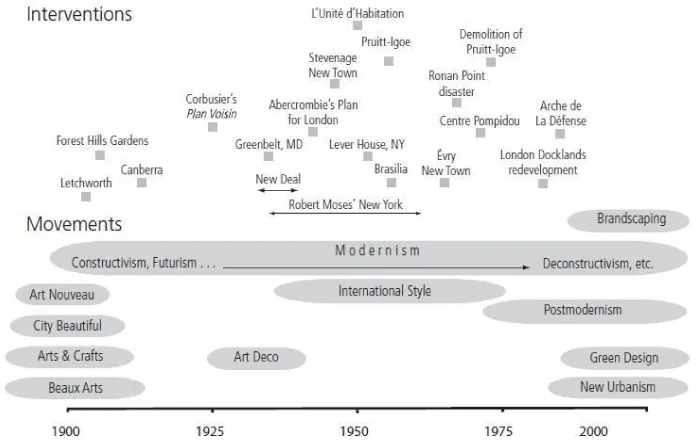
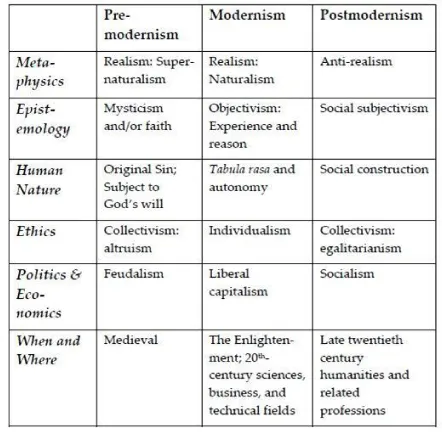

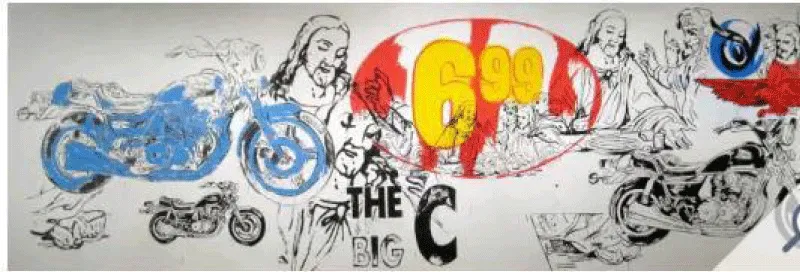
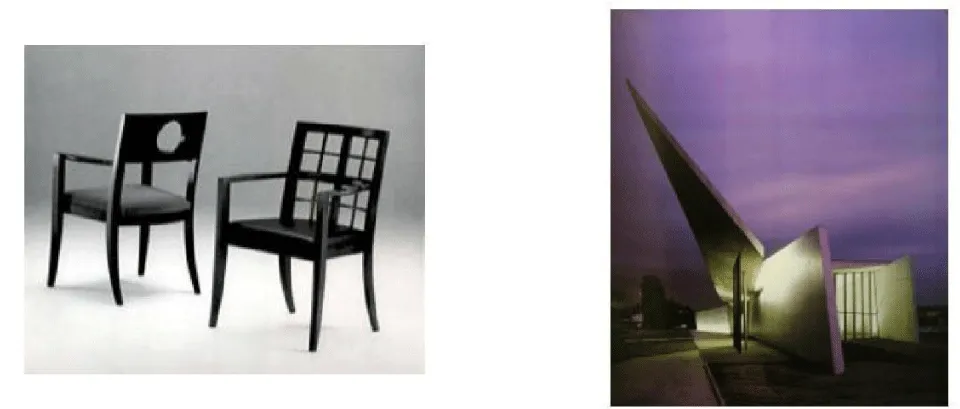
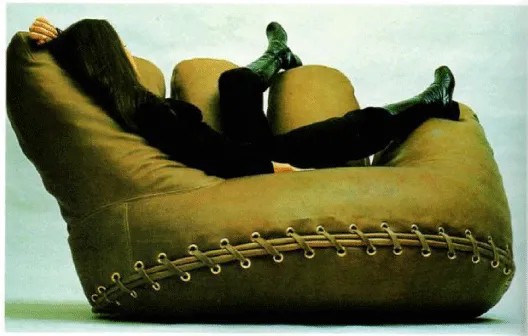

 Save to Mendeley
Save to Mendeley
